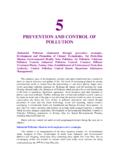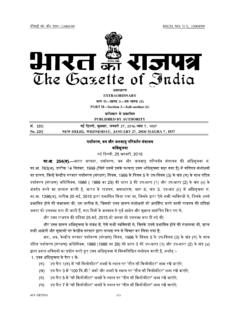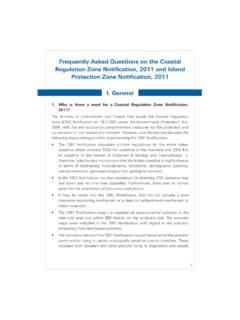Transcription of East Kolkata Wetlands: A Resource Recovery …
1 Sengupta, M. and Dalwani, R. (Editors). 2008 Proceedings of Taal2007: The 12th World Lake Conference: 868-881 east Kolkata Wetlands: A Resource Recovery System Through Productive Activities Nitai Kundu1, Mausumi Pal2 and Sharmistha Saha1. 1 east Kolkata Wetlands Management Authority, Department of Environment, Govt. of West Bengal, B 4, LA Block, Sector III, Salt Lake, Kolkata 700 098,India. 2 Institute of Environmental Studies & wetland Management, Department of Environment Govt. of West Bengal, B 4, LA Block, Sector III, Salt Lake, Kolkata 700 098, India. *Corresponding author: Email: ABSTRACT The east Kolkata Wetlands (EKW) comprises a large number of water bodies located in the districts of 24 Parganas North & South, West Bengal. It is adjacent to the eastern part of Kolkata and borders on the Salt Lake Township on the one hand and the upcoming new township at Rajarhat on the other. The multifunctional wetland ecosystem consists of an area of 12,500 hectares.
2 It comprises 254 sewage fed fisheries, small agricultural plots and solid waste farms. Besides, there are some built up areas also. The EKW nurtures the world s largest wastewater fed aquaculture system. The goods and services provided by this wetland include, in addition to fisheries, a very cheap, efficient and eco-friendly system of solid waste and sewer treatment system for the city of Kolkata , habitat for waterfowl and housing for a large flora and fauna. However, because of increasing pressure of urbanisation, change in the quality and quantity of the solid waste and sewer, as also human neglect this Ramsar site is under threat. To stop further deterioration of the system and to protect and develop its original character, it is therefore necessary to prepare a comprehensive and integrated management plan in keeping with basic guidelines of the Ramsar Protocol, and to implement it. This paper summarizes the methodology that has been followed in this direction and outlines the broad recommendations that have already been made.
3 The greater emphasis in drawing the management plan has been on the participation of various stakeholders. In doing so our understanding of the system and its people has been immensely enriched. We started with the assumption that to save the wetland it is necessary to save the people. After intensive interaction we have come to reformulate the principle as save the people to save the wetland . INTRODUCTION The increased awareness and valuing of wetlands over the past fifty years has in a large part been due to people experiencing and connecting with these areas. Every person learns about, experiences and enjoys wetland in different ways. Change and diversity are central themes in wetlands, whether they are natural or man made. The use of a range of dynamic, innovative, interactive and practical techniques is fundamental to fully engage people s senses, understanding and appreciation of wetlands.
4 The present study of east Kolkata Wetlands (EKW) is a unique example of innovative Resource reuse system through productive activities. It is situated at the eastern outskirt of the metropolitan city Kolkata and thus called east Kolkata Wetlands. The EKW is stretching over two districts viz. North 24 Parganas and South 24 Parganas covering 12,500 hectares area. This area includes around 254 sewage fed fisheries, agricultural land, garbage farming fields and some built up area. area of EKW is manmade water area. The Resource Recovery system, developed by the local people through ages using wastewater from the city, is the largest in the world and unique of its type. Long back this area used to be a buffer zone; later the urban waste, both solid garbage and sewage started to be dumped here. Consequently the practice of sewage fed pisciculture and agriculture made this area a natural waste-recycling region.
5 Waste water flows through fishponds covering about 4,000 ha, and the ponds facilitate a wide range of physical, biological and chemical processes which help improve the quality of the water. Consequently this wetland system is popularly known as the kidney of the city and has been described as "one of the rare examples of environmental protection and development management where a complex ecological process has been adopted by the local farmers for mastering the Resource Recovery activities" by Ramsar convention on Wetlands. In August 2002, the east Kolkata wetland area has been included in the List maintained under the Ramsar Bureau established under the Article 8 of the Ramsar Convention that has given this wetland the recognition of a wetland of International Importance . Geographical Information The EKW is situated at 880 20 E - 880 35 E and 200 25 N -200 35 N.
6 Climate here is more or less sub-tropical with the annual mean rainfall around 200 cm. The maximum temperature during summer rises around 390C. while minimum temperature during winter is around 100C. The average temperature during most part of the year is around 300C during day time with a fall in temperature of 50-60C at night. Hydrology of this wetland is particularly different from any other aquatic systems. The wetland has as such no catchment area of its own, although an estimated amount of approximately 250 million gallons of sewage per day is being charged into it. So far as ground water is concerned, there is hardly any good aquifer up to a depth of 400 feet. Water is present in basically perched aquifers. The total dissolved solid content sometimes exceeds 1800 ppm. The water table stands at a depth of a downward fluctuation of 1-2m.
7 During summer. (Garg et. al., 1998). In the fishery water the average pH is In the fisheries the BOD remains within the range from 35 to 50 ppm. & COD remains within the range from 55 to 140 ppm. (Saha and Ghosh, 2003). As regards the soil, there is no manner of doubt that it has very high moisture content of a mixed clay and alluvium type. Table 1. Land Use Status In EKW Area Land use Area Substantially Water body-oriented Area Agricultural Area Hectare Productive Farming Area Hectare Urban/Rural Settlements Hectare ( ha. Urban+ ha. Rural) Total Area Hectare Land Use Pattern: The total EKW area can be divided into four types of land use classes. These are (i) Substantially Waterbody Oriented area, (ii) Agriculture area, (iii) Productive Farming or Garbage Farming area and (iv) Settlement area (table -1). The Settlement area can be sub divided into Urban Settlement area and Rural Settlement area.
8 The lion share (47%) of the EKW is occupied by the substantially water area. Agriculture area consists of 38% while productive farming or garbage farming takes place in 5% land and rest 10% area is under settlement. There are a number of canals flowing through this region. Some are wide and deep and used for fetching the city sewage to this area and taken care of by the Irrigation & Waterways Department, Govt. of West Bengal and the other lot which mainly consists of narrow canals are basically owned and maintained by fishery owners or fishery cooperatives. The garbage dumping ground is falling under the jurisdiction of Kolkata Metropolitan Area (KMA) and Kolkata Municipal Corporation (KMC) manages the solid garbage dumping activity in this area. Biodiversity The east Kolkata Wetlands confirms its suitability for conservation of diverse elements of flora and fauna.
9 It is unique in terms of peri-urban wetland providing a multidimensional profile in terms of both wise use, complying with fish criteria and waterfowl habitat. The area is also well known for migratory birds. Aquatic vegetation in the sewage fed ponds is mainly dominated by some floating microphytes. Sometimes, at the edge some emergent microphytes also cover the wetlands, which are not used in the fishery purposes but harbor mixed types of wetland vegetation with major growth forms. Table 2. Phytoplanktonic Diversity in EKW Myxophyceae Chlorophyceae Bacillariophyceae Anabaena Sp Closterium Sp Navicula Sp Agmenellum Sp Tetraedron Sp Nitzschia Sp Microcystis Sp Cosmarium Sp Fragillaria Sp Spirulina Sp Euglena Sp Diatoma Sp Oscillatoria Sp Chlorella Sp Synedra Sp Schizothrix Sp Planktospherica Sp Pleurosigma Sp Closteropsis Sp Chodatella Sp Cocconeis Sp Glotrichia Sp Phytoconis Sp Calothrix Sp Scenedesmus Sp Lyngbya Sp Actinastrum Sp Phormidium Sp Asterionella Sp Schroederia Sp Flora: In 2004 summer the Institute of wetland Management and Ecological Design (IWMED) which is now named as Institute Of Environmental Studies and wetland Management (IESWM), working under the Department of Environment, Govt.
10 Of West Bengal conducted a biodiversity study in the EKW area. The study shows 30 genera of phytoplankton of which Myxophyceae, Cholorophyceae and Bacilliariophyceae contained 11, 12 and 7 genera respectively (table -2). From the different locality of the study area 96 species of vascular plants encountered which were mainly growing in wetlands and bank regions. These species were under 79 genera and 38 families. The vascular plants contained 62 species under 53 genera and 25 869 870families of dicotyledon, 31 species under 23 genera and 10 families of monocotyledons and only 3 species under same number of genera and families of pteridophytes. The diversity of wetland plants showed a total number of 55 species under 41 genera and 26 families. The wetland floral diversity shows several economically important wetland plant resources of which the numbers of species are in use of medicine, paper pulp, thatching materials, vegetables, food for water fowl, as green manure and compost, water purifies and fodder etc (table-3).

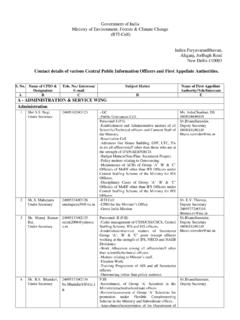
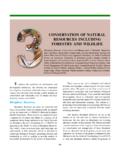
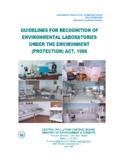
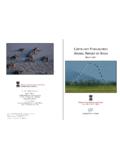
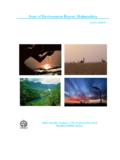
![Untitled-1 [www.moef.nic.in]](/cache/preview/0/7/5/4/5/e/c/5/thumb-07545ec5a24fcdf0c4f7836434cadcc8.jpg)
